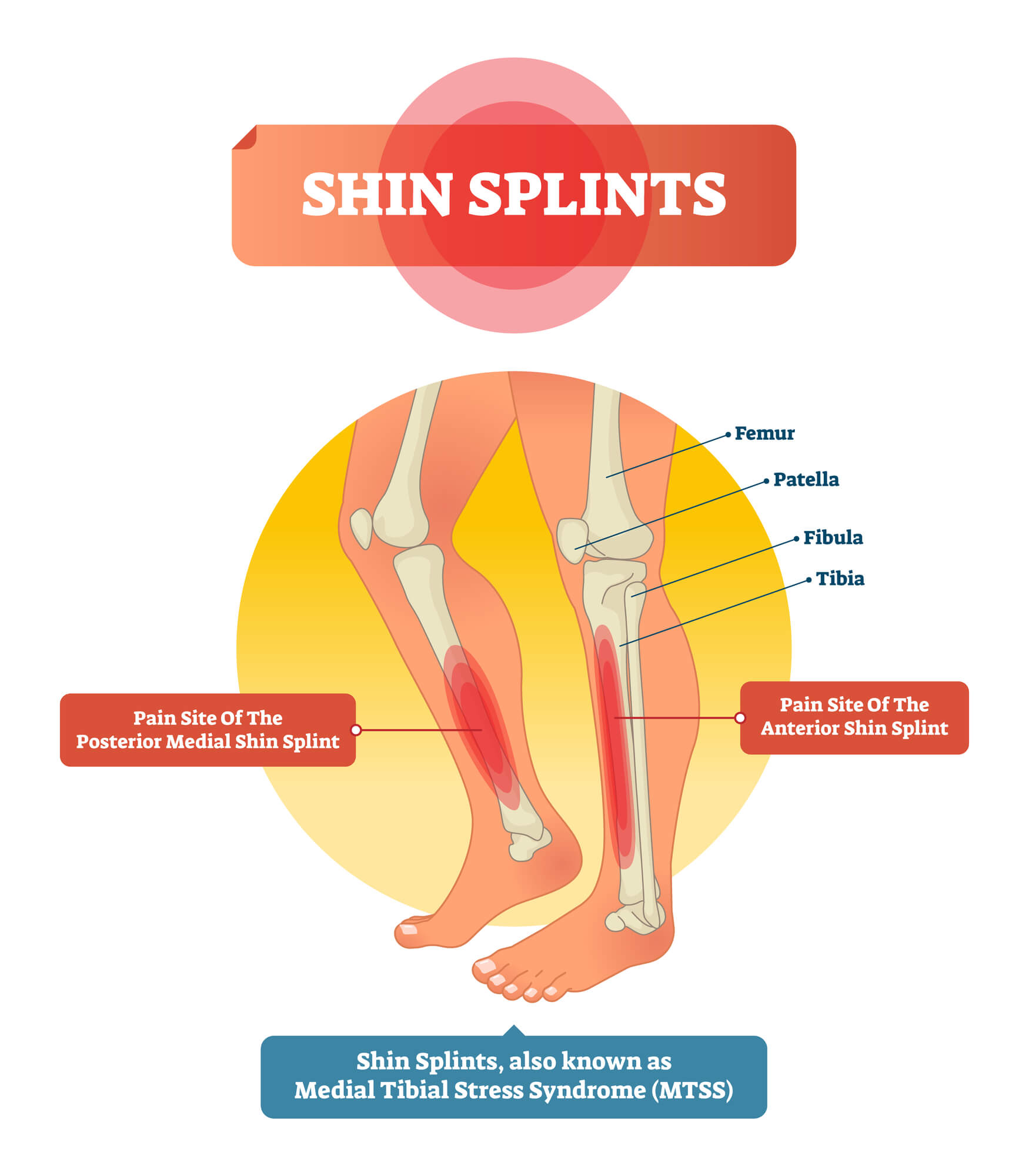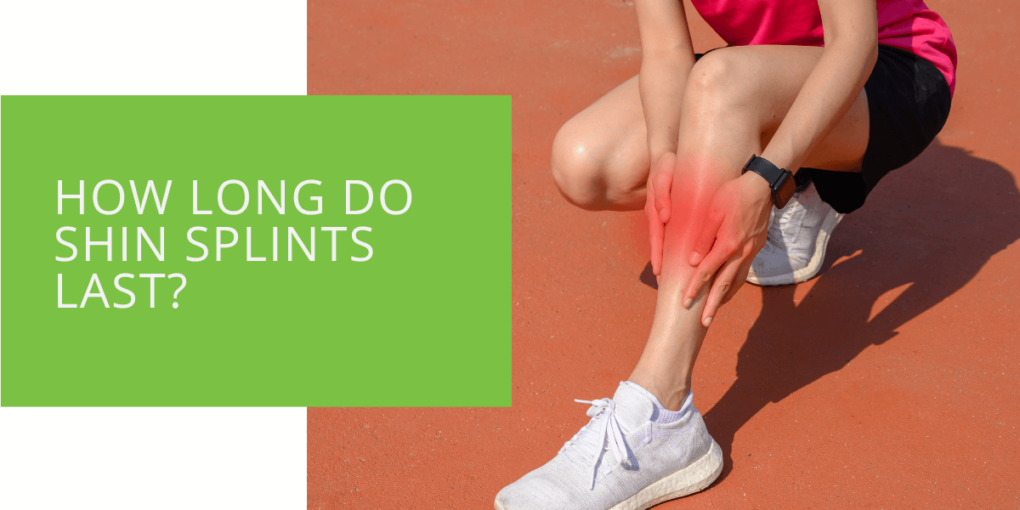How Long Do Shin Splints Last?
Shin splints can be a frustrating and painful condition that affects many individuals, particularly those engaged in high-impact activities. This article will explore the duration of shin splints, from mild to severe cases, and provide valuable insights into recovery timelines, treatment options, and expert advice to help you heal and get back on your feet.
Understanding Shin Splints
Shin splints, known as medial tibial stress syndrome, refer to the pain and discomfort experienced along the shin bone (tibia) and surrounding tissues. It is often caused by repetitive stress or overuse of the lower leg muscles, resulting in inflammation and tissue micro-tears.
Diagnosis and Severity
Proper diagnosis and severity assessment are crucial to determine the duration of shin splints. A podiatrist or healthcare professional can perform a thorough examination, review your medical history, and may recommend imaging tests, such as X-rays or MRI, to rule out other potential causes like stress fractures.
Factors Affecting Recovery Time
The duration of shin splints can be influenced by various factors that affect the healing process. Understanding these factors can help manage expectations and facilitate a smoother recovery. Here are some key considerations:
The Severity of the Shin Splints
The severity of shin splints plays a significant role in determining recovery time. Mild cases, characterized by minimal pain and inflammation, often resolve within a few weeks with proper care and rest. On the other hand, moderate to severe shin splints involving more pronounced pain and tissue damage may require a longer recovery period.
Promptness of Treatment
Seeking early treatment for shin splints can positively impact the healing process. When addressed at the initial stages, conservative measures such as rest, ice, compression, and elevation (RICE) can help alleviate symptoms and prevent further damage. Delaying treatment, however, may prolong the recovery time.
Compliance with Rest and Activity Modification
Rest is a critical component of shin splint recovery. It allows the affected tissues to heal and reduces stress on the lower leg. Compliance with prescribed rest periods and activity modification is essential to avoid exacerbating the condition. Failing to give the body sufficient time to heal can impede recovery progress.
Individual Healing Ability
Each person's healing ability varies, influenced by age, overall health, and genetics. Some individuals may naturally experience a faster recovery from shin splints, while others may require more time. Being patient and listening to your body's signals throughout the healing process is important.

Underlying Contributing Factors
Identifying and addressing any underlying contributing factors can impact recovery time. For example, biomechanical issues like overpronation or muscle imbalances can increase stress on the shins. In such cases, orthotic inserts, physical therapy, or specific exercises to correct these issues may be recommended, potentially extending the recovery period.
Adherence to Treatment Plan
Consistency and adherence to the prescribed treatment plan are crucial for effective recovery. This includes following recommendations for rest, physical therapy exercises, wearing orthotics, and any other interventions a healthcare professional suggests. Deviating from the treatment plan or neglecting self-care practices can delay healing and prolong recovery.
Overall Foot and Leg Health
The overall health of your feet and legs can influence recovery time. Pre-existing conditions, such as tendinitis or stress fractures, may complicate the healing process and require additional care. Maintaining good foot hygiene, wearing proper footwear, and engaging in foot-strengthening exercises can contribute to a faster and more successful recovery.
By considering these factors and working closely with a healthcare professional, you can develop a personalized recovery plan and optimize the healing process for your shin splints.
Remember, every individual's journey to recovery is unique, and it is important to consult with a podiatrist or healthcare professional to receive appropriate guidance and support throughout your healing process.
Recovery and Prevention
Recovering from shin splints requires a comprehensive approach that combines proper rest, targeted exercises, and preventive measures. Here are key strategies to facilitate recovery and minimize the risk of future shin splints:
Rest and Gradual Return to Activity
Rest is essential for the healing of shin splints. It allows the inflamed tissues to recover and rebuild strength. Depending on the severity of your shin splints, your healthcare professional may recommend complete rest or a modified activity plan. Gradually reintroduce activities, starting with low-impact exercises and slowly increasing intensity to avoid reaggravating the condition.
Rehabilitation Exercises and Stretching
Specific rehabilitation exercises and stretching routines can help strengthen the muscles surrounding the shins and improve flexibility. These exercises may include calf raises, toe raises, ankle rotations, and gentle calf and shin muscle stretching. Physical therapy sessions may also benefit guided rehabilitation and personalized exercise plans.
Proper Footwear and Orthotic Inserts
Wearing appropriate footwear is crucial for preventing and managing shin splints. Choose shoes that provide adequate support, cushioning, and stability for your foot type and activity level. Consider using orthotic inserts or shoe insoles that offer additional arch support and shock absorption if necessary. These inserts can help correct biomechanical issues and reduce the strain on your shins.

Cross-Training and Variation
Varying your physical activities and incorporating cross-training can help prevent overuse injuries like shin splints. Instead of focusing solely on high-impact exercises, alternate between different activities, such as swimming, cycling, or strength training. This approach reduces repetitive stress on the lower legs and allows for more balanced muscle development.
Gradual Progression and Monitoring
When returning to physical activity after recovering from shin splints, it is important to progress gradually. Increase the intensity, duration, and frequency of your workouts in a controlled manner, giving your body ample time to adapt. Pay attention to any signs of discomfort or pain during and after exercise. If symptoms reemerge, modify your routine or seek professional guidance.
Maintaining Overall Foot Health
Maintaining good foot health is essential for preventing shin splints. Keep your feet clean, dry, and free from infections. Trim your toenails properly and avoid wearing tight or ill-fitting shoes that can increase pressure on the shins. Regularly perform foot-strengthening exercises, such as toe curls and arch lifts, to promote foot stability and support.
Listen to Your Body
Above all, listen to your body's signals. Take appropriate action if you experience any pain, discomfort, or signs of shin splints. Rest, apply ice to the affected area, and consult a podiatrist or healthcare professional for an accurate diagnosis and guidance.
By implementing these strategies, you can effectively recover from shin splints and reduce the risk of future occurrences. Prevention is key, so take proactive steps to maintain proper foot health and engage in activities that promote overall strength and flexibility.
Consulting with a podiatrist or healthcare professional can provide personalized guidance based on your needs and help ensure a successful recovery and long-term prevention of shin splints.
When to Consult a Podiatrist
If you experience persistent or worsening shin pain, it is crucial to consult a podiatrist or healthcare professional. They can provide an accurate diagnosis, determine the severity of your condition, and recommend a personalized treatment plan to address your specific needs. Early intervention can prevent further complications and expedite the healing process.
Conclusion
Understanding the duration of shin splints and taking proactive steps for healing and prevention are essential for individuals experiencing this condition. By following the appropriate treatment protocols, seeking professional guidance, and making necessary lifestyle adjustments, you can effectively manage shin splints and regain your active lifestyle.
Remember, healing time may vary depending on the severity of the shin splints and individual factors. Be patient, listen to your body, and prioritize your foot health to promote optimal recovery.
Key Takeaways
- The duration of shin splints varies depending on the severity, with mild cases resolving within a few weeks and moderate to severe cases requiring a longer recovery period.
- Factors affecting recovery time include the severity of shin splints, promptness of treatment, compliance with rest and activity modification, individual healing ability, underlying contributing factors, and adherence to the treatment plan.
- Strategies for recovery and prevention of shin splints include rest, a gradual return to activity, rehabilitation exercises and stretching, proper footwear and orthotic inserts, cross-training and variation in activities, gradual progression and monitoring during exercise, maintaining overall foot health, and listening to your body's signals.

